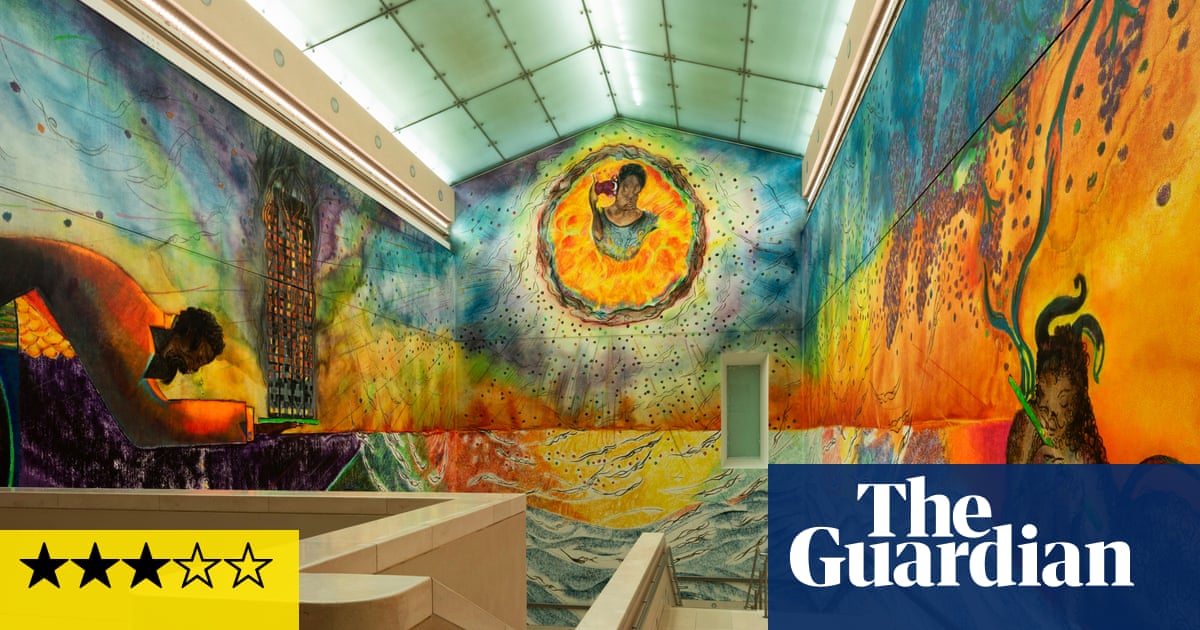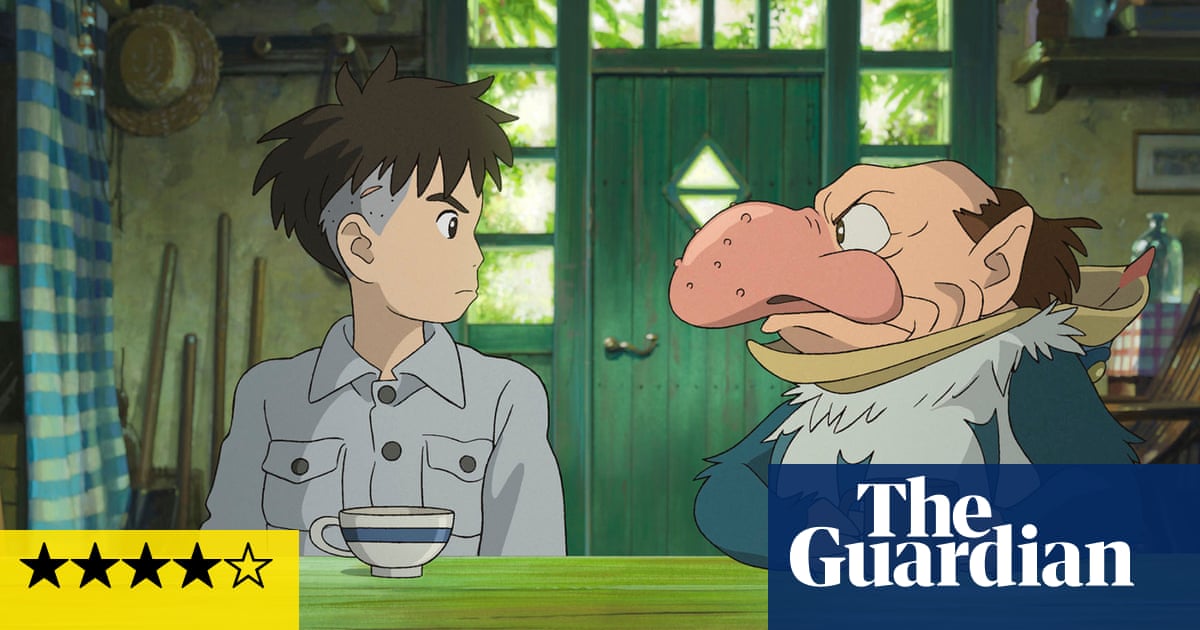
Cloven-hoofed, carnal and knowing, the devil is prominent in all seven of Chris Ofili’s suite of large-scale and deeply complex paintings, The Seven Deadly Sins. As much pagan fertility god as father of lies and temptation, the devil, half-hidden in the undergrowth, lounging in plain sight, or just smelling the flowers, he – and perhaps sometimes she – is everywhere. Sometimes, we just catch a glint of those pearlescent horns, the swish of a snaking tail, which makes its serpentine way through a sensual world of natural abundance and luxuriant growth.
Looking at these new paintings by Ofili, your eye slides and drifts, trying to catch hold, but it keeps on slipping and gets pulled under, caught by currents and undertows and dragged around. Ofili captures your sight and makes you aware of the act of your own seeing. Bridget Riley does this, too, in a very different way. Every mark, every dot or sinuous line in Ofili’s painting is deliberate, the result of a conscious touch or series of touches. Every inch clamours for attention. Although rich and dense, most of these works are thinly, almost transparently painted, till suddenly, in one that recalls Fragonard’s rococo The Swing, there’s a swerve to thickly applied, clotted opacity. The Seven Deadly Sins are paintings in constant transition: between surface and depth, figure and foliage, light and dark; between mythology and religion, the sacred and profane.
Begun in 2017, and worked on in Barbados and Trinidad where Ofili lives, the paintings were all completed this year. They don’t hit you all at once. Limbs appear and disappear, fold and spread. You can never quite count the bodies. They’re left incomplete, or glimpsed as voluptuous bulges and extrusions, camouflaged by constant shifts in touch and application.
White egrets fly across one, passing between pairs of elegant legs. Scale shifts and shifts again. Souls swirl in a vortex as Pan plays a pipe. There are palmettos and carnal flowers and leaf-forms, writhing stems and snaking tendrils that make me think of the Viennese secessionists and of Hilma af Klint – if only the visionary theosophist and abstractionist had left Sweden, gone to the Caribbean and discovered sex. Franz Marc is in there (Ofili has long been fascinated by Marc and Kandinsky’s Der Blaue Reiter), and William Blake too, with his swooning spirits and angels, as well as his weird anatomies.
Ofili’s work keeps developing. Now 54, he makes art that is always recognisable, but he hasn’t pinned himself down. One thing always leading to another, in novel ways. I am reminded of Sigmar Polke, not just because of Polke’s use of dots, or that the German painter also painted the devil. Ofili, like Polke, is interested in the altered states paintings might conjure.
Ornamentation and visual excess have always featured in Ofili’s art. Earlier, there were coloured map-pins in balls of elephant dung, crowds of cut-out faces with afro hair, snippets of collaged porn, drifts of glitter trapped in lakes of resin, painted lattices and repetitive marking and patterning. Now there are swarms of dots and painted points. Like constellations and fireflies, cosmic rays and radiation, the dots cascade and rise like motes in the air and bubbles in a glass. They deluge and blizzard and fizz, veiling our vision.
I’m reminded how the world atomises in the moment of fainting, or when the first rush of a drug kicks in. Voluptuous, narcotic, symbolist phantasmagorias in which nature is both fecund and corrupt, these paintings are among the most seductive things Ofili has ever done. If the plant life is not altogether benign, what of the little black faces sucking on flower stems and looking on from the margins? There are some very weird moments here. The paintings even feel a bit dangerous.
Maybe Ofili, who was once a Manchester altar-boy, has made a Faustian pact. Pride, greed, wrath, gluttony, lust, envy and sloth: a painter might need these urges to get going and keep at it. They’re all part of the creative armoury. Even sloth has its place. I have an overriding feeling that these paintings hold secrets, which are a good thing for any art to have. They tantalise and beguile. I still haven’t got to the bottom of them. Perhaps there isn’t one.
Chris Ofili: The Seven Deadly Sins is at the Victoria Miro, London, until 29 June












